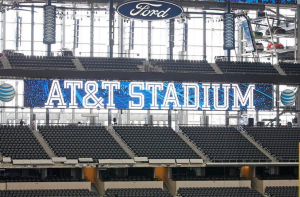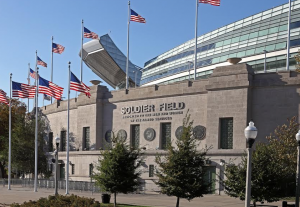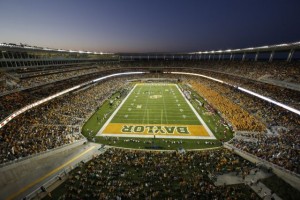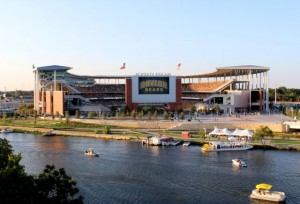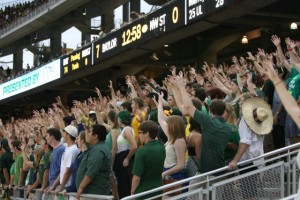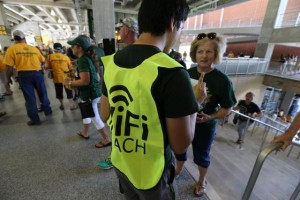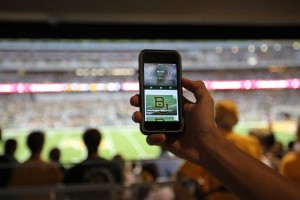Editor’s note: The following team-by-team capsule reports of NFL stadium technology deployments are an excerpt from our most recent Stadium Tech Report, THE FOOTBALL ISSUE. To get all the capsules in one place as well as our featured reports, interviews and analysis, download your free copy of the full report today.
NFC EAST
Reporting by Chris Gallo
Dallas Cowboys
AT&T Stadium
Seating Capacity: 105,121
Wi-Fi – Yes, 1,525 access points
DAS – Yes, 1,374 antennas
Beaconing – No
New York Giants
MetLife Stadium
Seating Capacity: 82,500
Wi-Fi – Yes, 850 access points
DAS – Yes, over 600 antennas
Beaconing – No
The Super Bowl champions just three years ago, it appears their bunk mates’ play is rubbing off on the Giants. Like the cross-town Jets, the G-Men missed the playoffs for the second straight season last year. If it’s any consolation, the Giants still share one sports top venues in MetLife Stadium. AT&T and Verizon gave enough love and attention the stadium last year as host of Super Bowl XLVII. Over 600 DAS antennas, 850 Wi-Fi access points, Cisco StadiumVision with over 2,100 HD TVs around the concourse – that’s a recipe for a good time at a game, at least from a connectivity standpoint.
Philadelphia Eagles
Lincoln Financial Field
Seating Capacity: 69,176
Wi-Fi – Yes, 600+ access points
DAS-Yes
Beaconing – No
Lincoln Financial Field is one of the “greenest” stadiums in all of professional sports. And that’s not just because of the Eagles’ colors. All (100 percent) of the Eagles operations are powered by the sun and the wind. The stadium’s connectivity is something fans can get behind too. With over 600 Wi-Fi access points and a group of Extreme Networks’ “Wi-Fi coaches”, the Eagles are doing everything they can to make sure fans are connected at games.
Washington Redskins
FedEx Field
Seating Capacity: 85,000
Wi-Fi – Limited / club level only
DAS-Yes
Beaconing – No
A new coach, name controversy, and a $27 million dollar renovation underway at FedEx Field. It’s been an offseason full of distractions in the nation’s capital. The good news: The team just signed a deal with supplier Huawei to put Wi-Fi in the stadium, first in the club seats and then (hopefully) next year in the full seating bowl.
